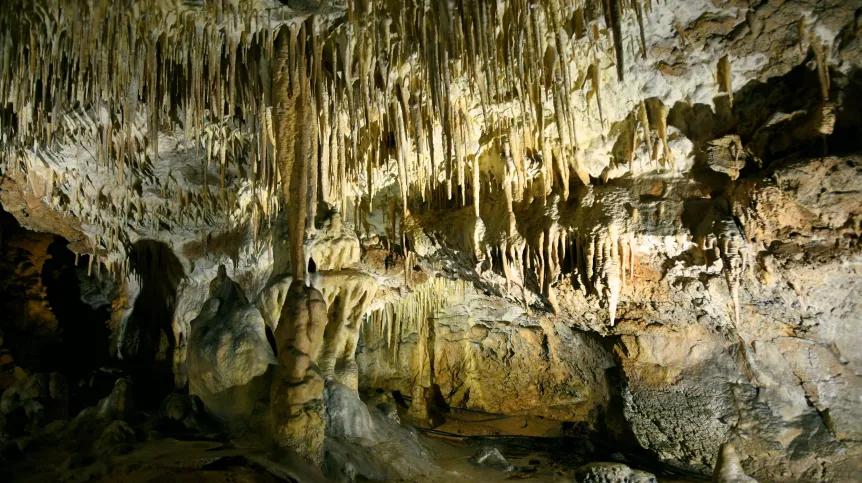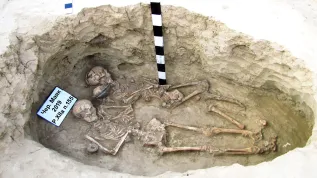
Archaeologists have resumed research in the Raj Cave in the Świętokrzyskie Mountains. Their goal is to reconstruct climate changes in prehistory and study the life of Neanderthals. After a few days of research, they found the first artefacts, including reindeer antlers and cave bear bones.
According to Dr. Małgorzata Kot from the Faculty of Archaeology at the University of Warsaw, who supervises the current work, research has been conducted for several days and should be completed by the end of July.
'We have cut down the wall next to the tourist route, opened a dig about two square meters in size and we are slowly examining all the layers. We would also like to explore the area in front of the cave entrance. We will see if we manage to do that, because we have already found a lot of bones', says Dr. Kot.
Archaeologists returned to the Raj Cave about 60 years after its discovery. One of the research goals is to verify the hypothesis regarding reindeer antlers found in large numbers in the cave. According to the hypothesis put forward at that time, Neanderthals used the collected antlers to build barricades and protect cave entrances.
'There really are a lot of reindeer antlers, which makes us very happy', says Kot. ‘In addition, we discover typical cave fauna, e.g. bones of a cave bear and single teeth of smaller predators, which will require additional analyses', she adds.
The first part of the research was conducted in February. About 200 large well-preserved bones of animals including a cave lion, a mammoth, a bear and a rhinoceros, as well as fragments of reindeer antlers were found. Preliminary research also established that over thousands of years, not only Neanderthals, but also modern humans lived in the Raj Cave, which had not been recorded before.
Just like five months ago, scientists chose the European Centre for Geological Education as their scientific base. It is a scientific and research centre of the Faculty of Geology of the University of Warsaw, located in Korzecko, Chęciny commune. Successive layers of earth and prehistoric artefacts are transported to this facility, where they are segregated and cleaned in laboratories. The research team consists of several people.
The research is financed with a grant awarded by the Polish National Science Centre. The project aims to reconstruct in detail the climatic and environmental changes that occurred in the prehistory of Southern Poland and relate them to settlement strategies from the Late Middle Palaeolithic to the Upper Palaeolithic, between approximately 60,000 and 14,500 years ago. This was the period of migration of modern humans to Europe and the slow extinction of Neanderthals, as well as the disappearance of the so-called Pleistocene fauna.
As part of the project, researchers intend to analyse fossil material from several caves in southern Poland. In addition to the Raj Cave in the Świętokrzyskie Mountains, it also includes the Deszczowa Cave in the Kraków-Częstochowa Upland and the Obłazowa Cave in the Western Carpathians.
The Raj Cave was formed in limestone rocks that had formed at the bottom of a shallow sea about 360 million years ago. It was discovered by students from the Kraków geological technical school in 1964 during field exercises in the Świętokrzyskie Mountains. It is distinguished by an exceptionally rich, diverse and well-preserved dripstone with over 47,000 stalactites. The tallest dripstone column is almost two meters high. The cave has been open to the public since 1972. (PAP)
PAP - Science in Poland, Wiktor Dziarmaga
wdz/ bar/ kap/
tr. RL













